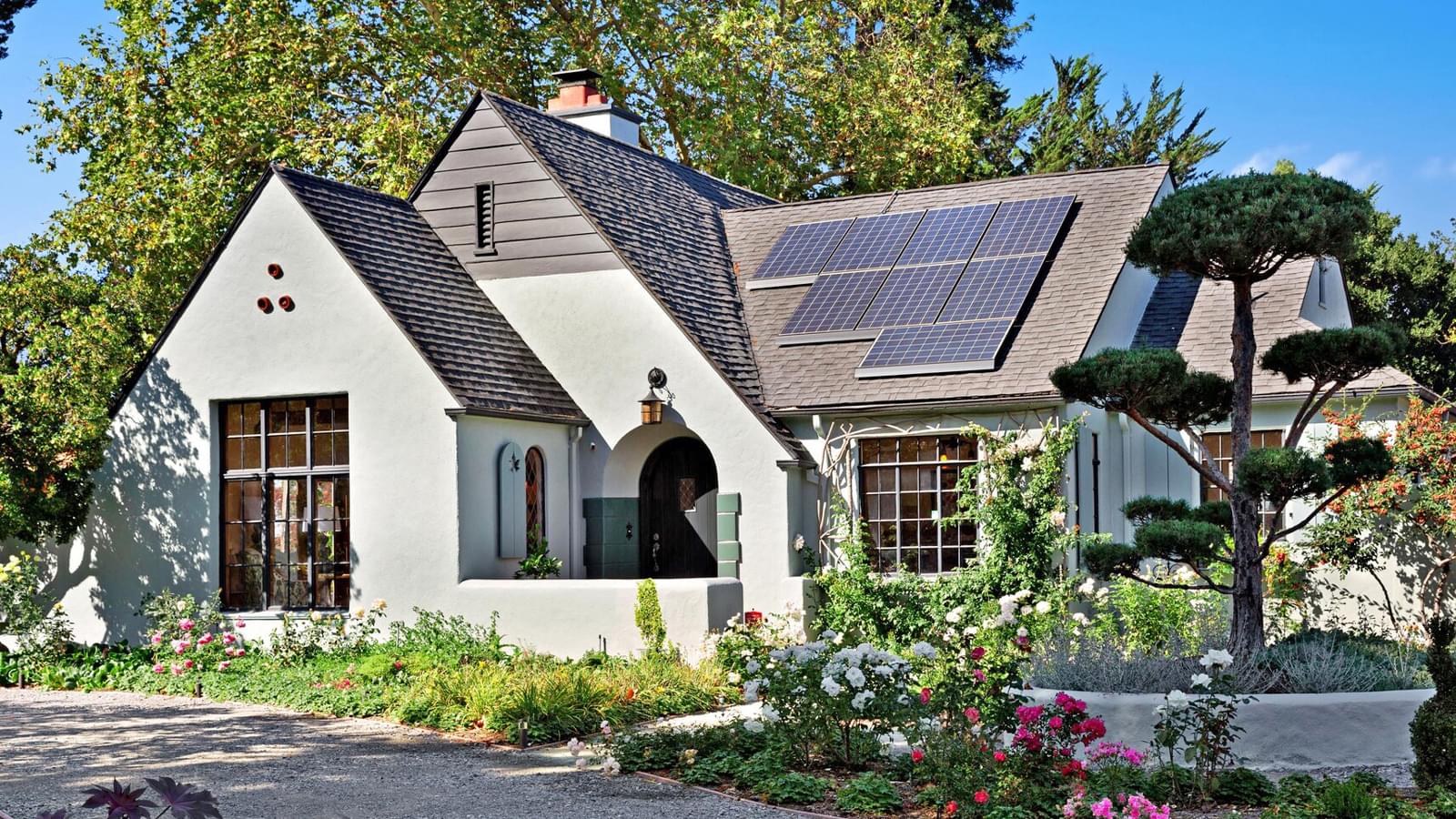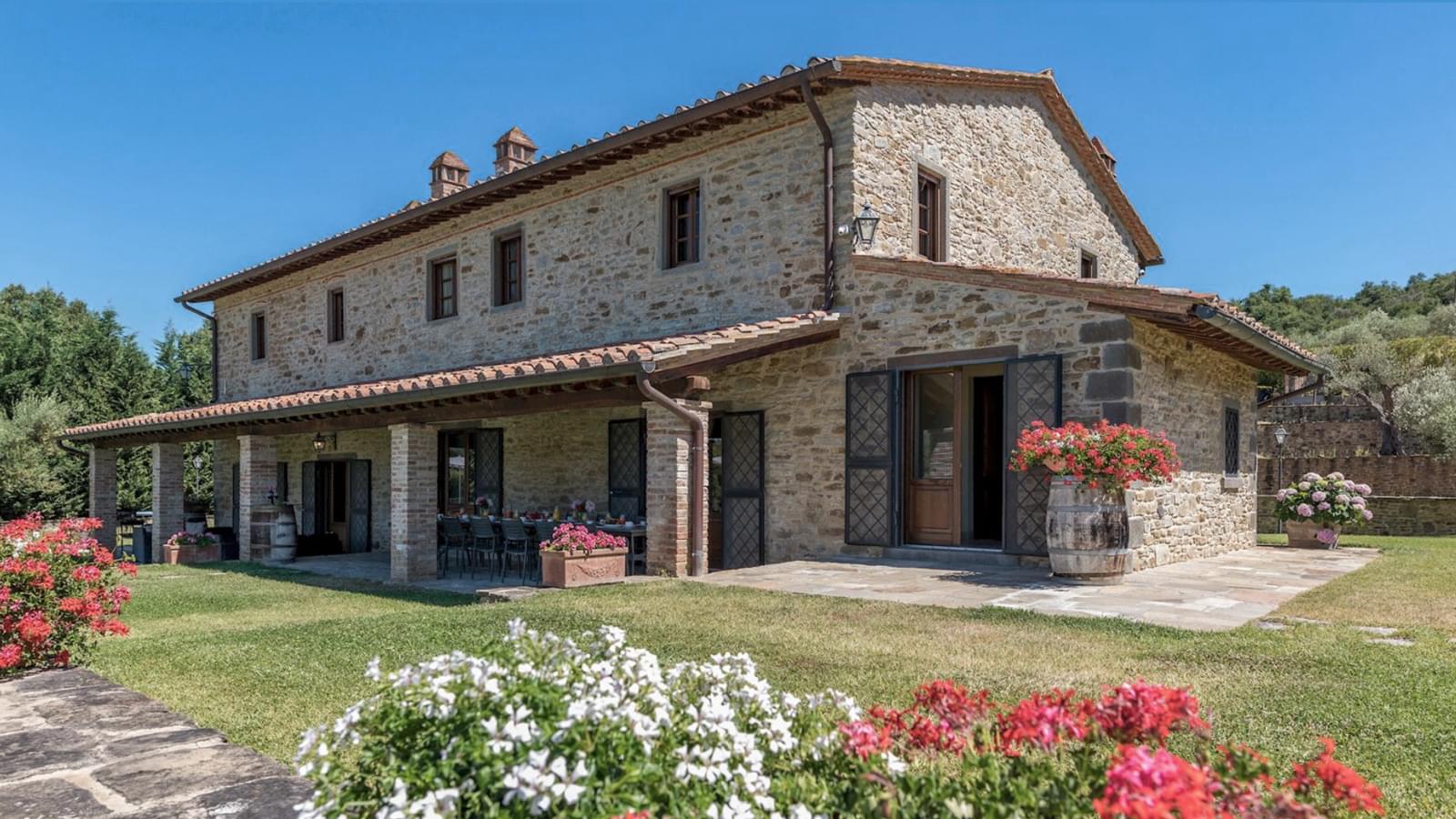Tasmania Vacation Rentals
Explore 1500+ rental homes and villas in Tasmania for your next vacation or business travel. With private vacation home rentals, enjoy a more personalized stay and a wide range of amenities such as Air Condition Homes, Best Affordable Homes and Great for Groups. With a wide range of homes to offer, pricing can start as low as $45 per night with homes containing as many as 12 bedrooms and 13 bathrooms. However you're looking to experience your stay, Homes and Villas by Marriott has your next vacation home waiting.
Types of vacation rentals in Tasmania
Where to stay in Tasmania
Booking a vacation rental in Tasmania?
Here are some things to know to support your visit:
Tasmania Overview
Immerse yourself in the enchanting beauty of Tasmania, Australia's island state, where the allure of untouched wilderness meets the comfort of luxury living. Tasmania is a haven for those who seek the serenity of nature without forgoing the pleasures of a private retreat. Imagine waking up in your own secluded home, with the day's itinerary entirely at your discretion, and perhaps even your beloved pet by your side in one of the many pet-friendly accommodations available.
The heart of Tasmania's natural splendor can be found in the World Heritage-listed Western Wilds, where ancient rainforests and glacial valleys await your exploration. The crown jewel of this region is the iconic Cradle Mountain-Lake St Clair National Park, offering awe-inspiring vistas and the renowned Overland Track, a hiker's paradise. For a truly unique experience, consider a home rental with a swimming pool, where you can relax after a day of adventure, surrounded by Tasmania's breathtaking landscapes.
Tasmania's coastline is a spectacle in itself, with the Bay of Fires boasting pristine white sands and turquoise waters, punctuated by the distinctive orange hues of granite boulders. The Tasman Peninsula's rugged cliffs offer a dramatic backdrop for coastal walks and the chance to witness the mesmerizing Southern Lights on a crisp winter's night.
The island's rich tapestry of history and culture is palpable in its colonial architecture and vibrant arts scene. Hobart, the state's capital, is a hub of activity with its historic Salamanca Place, home to the bustling Salamanca Market, and the thought-provoking Museum of Old and New Art (MONA). Here, the past and present converge in a celebration of creativity and heritage.
Tasmania's culinary landscape is a feast for the senses, with an emphasis on locally-sourced, seasonal ingredients. From artisan cheeses to the freshest seafood, the island's produce is a testament to its pristine environment. The Tamar Valley's cool-climate wines are the perfect accompaniment to any meal, with vineyards offering tastings amidst scenic vistas.
For the thrill-seekers, Tasmania's wild rivers, craggy gorges, and mountain bike trails offer exhilarating adventures. Yet, the island's commitment to sustainability ensures that these experiences are enjoyed with a deep respect for the natural world.
Tasmania is more than a destination; it's an experience that seamlessly blends adventure with the comforts of home. Whether you're lounging by your private pool, strolling along a secluded beach, or savoring the local flavors, Tasmania invites you to indulge in its unique blend of wilderness and luxury.
Cultural Attractions in Tasmania
Tasmania, an island state of Australia, is a cultural enthusiast's delight, offering a rich tapestry of arts, history, and local customs set against a backdrop of stunning natural beauty. The island's vibrant cultural scene is as diverse as its landscapes, providing a wealth of experiences for those who seek to immerse themselves in the arts, music, and heritage.
Begin your cultural journey in Hobart, Tasmania's capital, where the internationally acclaimed Museum of Old and New Art (MONA) awaits. This subterranean museum is renowned for its provocative and thought-provoking exhibitions, showcasing a mix of ancient and contemporary art. MONA also hosts the annual MONA FOMA (Museum of Old and New Art Festival of Music and Art), a festival that features an eclectic mix of music and art performances.
For a dose of history, venture to the Tasmanian Museum and Art Gallery, where you can explore Tasmania's natural and cultural heritage through a variety of exhibits. The museum's collections include Tasmanian Aboriginal artifacts, colonial art, and engaging displays on the island's unique biodiversity.
Live music thrives in Tasmania, with venues like the Republic Bar and Café in North Hobart offering nightly gigs ranging from local folk to international rock acts. The island also celebrates its classical music scene with the Tasmanian Symphony Orchestra performing in the Federation Concert Hall in Hobart.
Art enthusiasts will find a haven in the many galleries scattered across the island. Salamanca Place in Hobart is lined with galleries and studios where you can discover the work of local artists and craftspeople. The Saturday Salamanca Market is a cultural experience in itself, where you can enjoy live street performances, local crafts, and gourmet food.
Tasmania's history is deeply intertwined with its convict past, and a visit to the Port Arthur Historic Site provides a poignant look into the lives of convicts who were transported to Australia. The well-preserved ruins and interactive exhibits offer a compelling narrative of Tasmania's colonial history.
Local customs and traditions are best experienced through Tasmania's festivals and events. The Taste of Tasmania is an annual celebration of local food and drink, while the Dark Mofo festival, also hosted by MONA, delves into centuries-old winter solstice rituals with art, music, and food.
Beyond the cities, Tasmania's smaller towns like Richmond and Evandale boast charming colonial architecture and host regular markets and festivals that reflect the island's local customs and community spirit.
In Tasmania, every experience is enriched by the island's dramatic landscapes, from the rugged mountains to the tranquil bays. It's a place where culture is not just observed but felt, where history is not just learned but lived, and where the arts are not just seen but experienced.
Family friendly activities in Tasmania
Tasmania, Australia, is a treasure trove of family-friendly adventures, offering a mix of natural beauty, wildlife encounters, and educational experiences that will captivate children and adults alike.
Start your Tasmanian journey at the Bonorong Wildlife Sanctuary, where kids can get up close and personal with native Australian animals. They'll have the chance to feed kangaroos, pat wombats, and learn about the sanctuary's efforts to protect the endangered Tasmanian devil. The sanctuary's passionate guides provide engaging talks that are both informative and entertaining for young minds.
For a historical adventure, take a trip to Port Arthur Historic Site. While the tales of convicts and penal colonies may seem grim, the site offers interactive experiences tailored for children, such as the Education Activity Book, which turns learning into a fun scavenger hunt through the ruins and restored buildings.
The Tasmanian Museum and Art Gallery in Hobart is another excellent stop for families. With a dedicated children's gallery, it encourages kids to explore the natural and cultural heritage of Tasmania through hands-on exhibits and creative play spaces.
Outdoor enthusiasts will love exploring Cradle Mountain-Lake St Clair National Park. Here, families can embark on short walks suitable for little legs, such as the Enchanted Walk, which meanders through rainforest and past streams, with the possibility of spotting wombats along the way. The park also offers ranger-led activities during school holidays, making it a great educational experience for children.
For a unique subterranean adventure, head to the Hastings Caves State Reserve. The Newdegate Cave, one of the largest dolomite caves in Australia, fascinates children with its impressive stalactites and stalagmites. After exploring the caves, families can relax in the nearby thermal springs pool, which is comfortably warm year-round.
On the east coast, Freycinet National Park awaits with its stunning Wineglass Bay. Families can take a gentle walk to the lookout for panoramic views or enjoy the white sands and clear waters at the beach. The park also offers junior ranger programs during school holidays, which involve educational walks and talks about the local flora and fauna.
Lastly, don't miss the chance to visit the Tasmazia & The Village of Lower Crackpot, a whimsical attraction featuring a maze complex, model village, and pancake parlor that will keep the kids entertained for hours.
Tasmania is a place where childhood wonder meets natural splendor, creating a family holiday that's as enriching as it is enjoyable. With its diverse range of activities, Tasmania ensures that every family member, from the youngest to the oldest, will leave with cherished memories.
Outdoor activities in Tasmania
Tasmania, Australia's island state, is a treasure trove of natural wonders and outdoor activities, making it an ideal destination for nature lovers and adventure seekers. With its rugged wilderness, pristine beaches, and unique wildlife, Tasmania offers an array of experiences that are both exhilarating and serene.
The Tasmanian Wilderness World Heritage Area, covering about 1.5 million hectares, is a highlight for any outdoor enthusiast. This vast expanse includes some of the last true wilderness regions on Earth, with ancient rainforests, alpine heaths, and glacial valleys. Hiking opportunities abound, with iconic trails like the Overland Track, which takes you through the heart of this pristine landscape over six days.
Cradle Mountain-Lake St Clair National Park is a jewel in Tasmania's wilderness crown. The park is home to the world-famous Cradle Mountain and the serene Lake St Clair, the deepest freshwater lake in Australia. Here, you can embark on day walks or the full Overland Track, encountering diverse ecosystems and possibly spotting Tasmanian devils, echidnas, or platypuses along the way.
For a coastal experience, the Freycinet National Park offers stunning beauty with its pink granite peaks, white sandy beaches, and crystal-clear waters. Wineglass Bay, with its perfectly curved shoreline, is one of the park's most photographed views. Kayaking, boating, and wildlife tours are popular activities, as is hiking to the lookout points for breathtaking vistas.
Adventure seekers can explore the wild and scenic rivers of Tasmania by rafting. The Franklin River, in particular, provides one of the world's great river journeys, with challenging rapids and tranquil gorges. For a more relaxed water experience, the Bay of Fires on the northeastern coast offers a spectacular setting for snorkeling, swimming, and beachcombing, with its clear blue waters and boulder-strewn shores.
Tasmania's unique flora and fauna are a drawcard for nature enthusiasts. The island is one of the last strongholds for several endangered species, and wildlife sanctuaries offer the chance to see these animals up close. The Tarkine region, with its vast temperate rainforest, is another biodiverse area where you can immerse yourself in the natural world.
For those who enjoy a more leisurely pace, Tasmania's botanical gardens, such as the Royal Tasmanian Botanical Gardens in Hobart, showcase the island's diverse plant life, including species found nowhere else on Earth.
In Tasmania, every turn reveals a new natural wonder, from the rugged peaks of the mountains to the tranquil shores of secluded bays. It's a place where you can connect deeply with nature and find adventure around every corner.
Weather in Tasmania
Tasmania, the island state of Australia, is renowned for its diverse and often unpredictable weather patterns, largely due to its geographical position and varied topography. The climate is classified as oceanic, meaning it has mild summers and cool winters, with rainfall spread throughout the year.
Summer, from December to February, is the warmest and driest season, with average temperatures ranging from 12°C to 21°C. This is the peak season for visitors, as the weather is ideal for exploring Tasmania's stunning beaches, national parks, and outdoor festivals. However, even in summer, the weather can change rapidly, so it's wise to be prepared for cooler conditions, especially in the evenings.
Autumn, from March to May, sees a gradual cooling with temperatures ranging from 9°C to 17°C. This season is particularly beautiful as the foliage turns to vibrant hues of red, orange, and yellow. The weather is still pleasant for outdoor activities, and the changing leaves provide a spectacular backdrop for hiking and photography.
Winter, from June to August, is the coolest season, with temperatures typically ranging from 3°C to 11°C. Snowfall is common in the highlands, making it a popular time for winter sports enthusiasts. Coastal areas, however, tend to be milder and snow is rare. Winter also brings with it the possibility of witnessing the Southern Lights (Aurora Australis), a draw for those keen on astrotourism.
Spring, from September to November, is a time of renewal, with temperatures ranging from 7°C to 16°C. The landscape comes alive with wildflowers and the weather gradually warms up, making it a great time for outdoor pursuits like hiking and cycling. Rainfall is more frequent in spring, but this also contributes to the lushness of the Tasmanian wilderness.
The most popular weather conditions are prevalent in the summer months, when the climate is warmest and driest, making it ideal for the full range of outdoor activities that Tasmania offers. However, for those looking to avoid the crowds and experience the island's natural beauty with a bit more solitude, late spring and early autumn offer a sweet spot with comfortable temperatures and fewer tourists.
Regardless of the season, Tasmania's weather can be variable, so it's always advisable to pack layers and waterproof clothing. The island's natural beauty shines through in any weather, ensuring a memorable visit year-round.
Transportation in Tasmania
Tasmania, the island state of Australia, is a treasure trove of natural beauty, cultural experiences, and culinary delights. Travelers looking to explore Tasmania have several options for both arrival and getting around the island.
Most visitors arrive in Tasmania by air or sea. The two major airports, Hobart International Airport and Launceston Airport, offer flights from mainland Australia's capital cities. For those who prefer to bring their own vehicle or enjoy a scenic voyage, the Spirit of Tasmania ferry sails between Melbourne and Devonport, allowing passengers to travel with their car or camper.
Once on the island, the options for transportation vary depending on the type of experience you're seeking. Car rental is the most flexible and popular choice, as it allows visitors to explore Tasmania's diverse landscapes at their own pace. The island's roads are well-maintained and signage is clear, making for a comfortable self-drive experience. However, always be mindful of wildlife on the roads, especially at dawn and dusk.
For those who prefer not to drive, Tasmania has a network of buses that connect major towns and cities. Tassielink and Redline are the primary bus companies offering services between urban centers and to some of the more popular tourist destinations. However, public transport may not reach all the remote areas, so check schedules in advance.
Tasmania is also a cyclist's paradise, with numerous trails and dedicated cycle paths. Biking is a wonderful way to experience the island's natural beauty up close, though be prepared for some hilly terrain.
As for walkability, Tasmania's cities and towns like Hobart, Launceston, and Port Arthur are quite pedestrian-friendly, with many attractions, restaurants, and shops within easy walking distance. However, to truly experience the breadth of Tasmania's wilderness, such as the famous Cradle Mountain-Lake St Clair National Park or the pristine beaches of the East Coast, you will need some form of transportation.
For those looking for an organized approach, guided tours are available and offer the benefit of local knowledge and hassle-free travel to some of the island's most iconic locations.
In summary, Tasmania offers a variety of transportation options suitable for different travel styles and preferences. While the island's cities and towns can be enjoyed on foot, to fully embrace the natural wonders of Tasmania, having access to a car or joining a tour is recommended.






